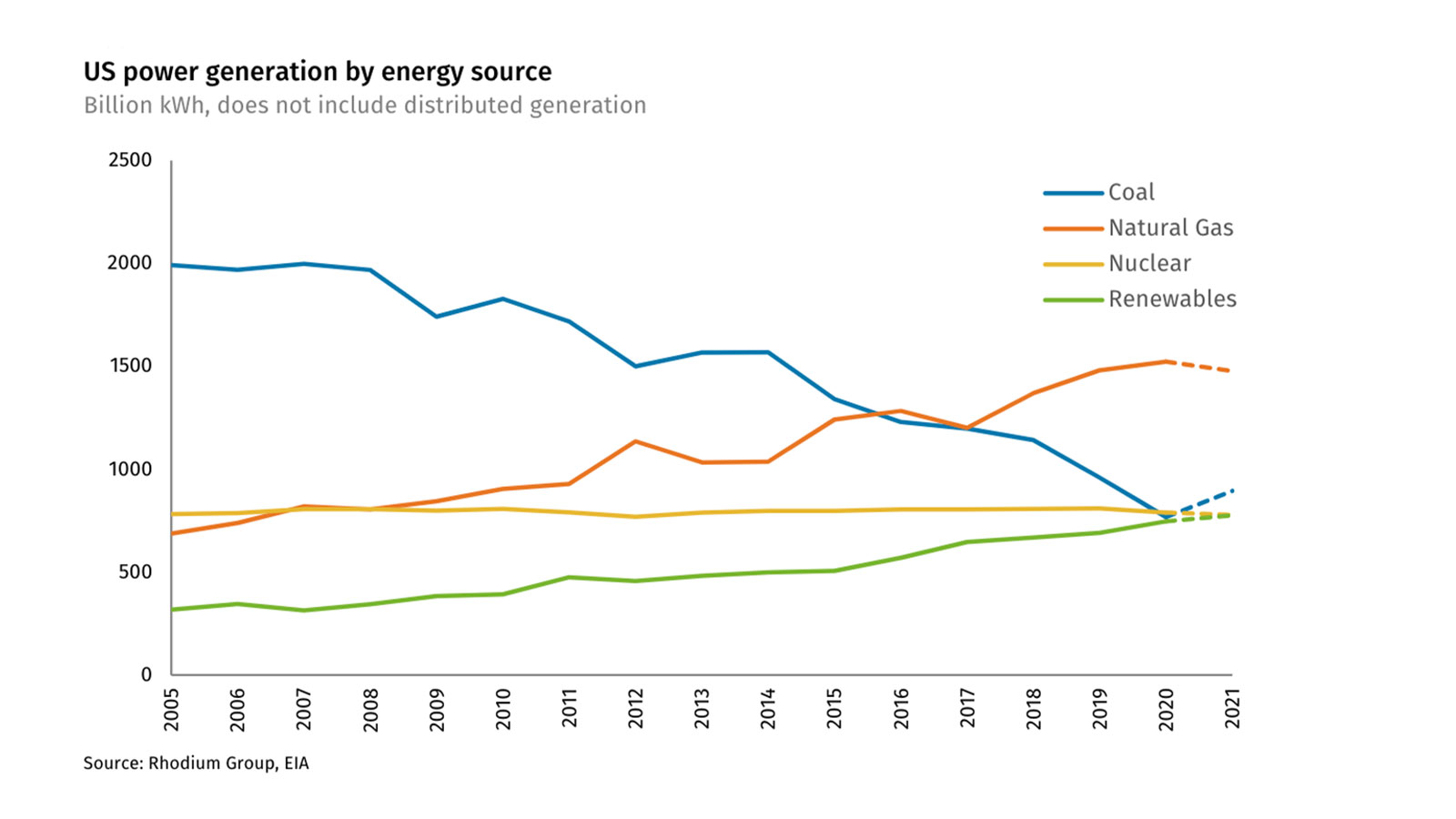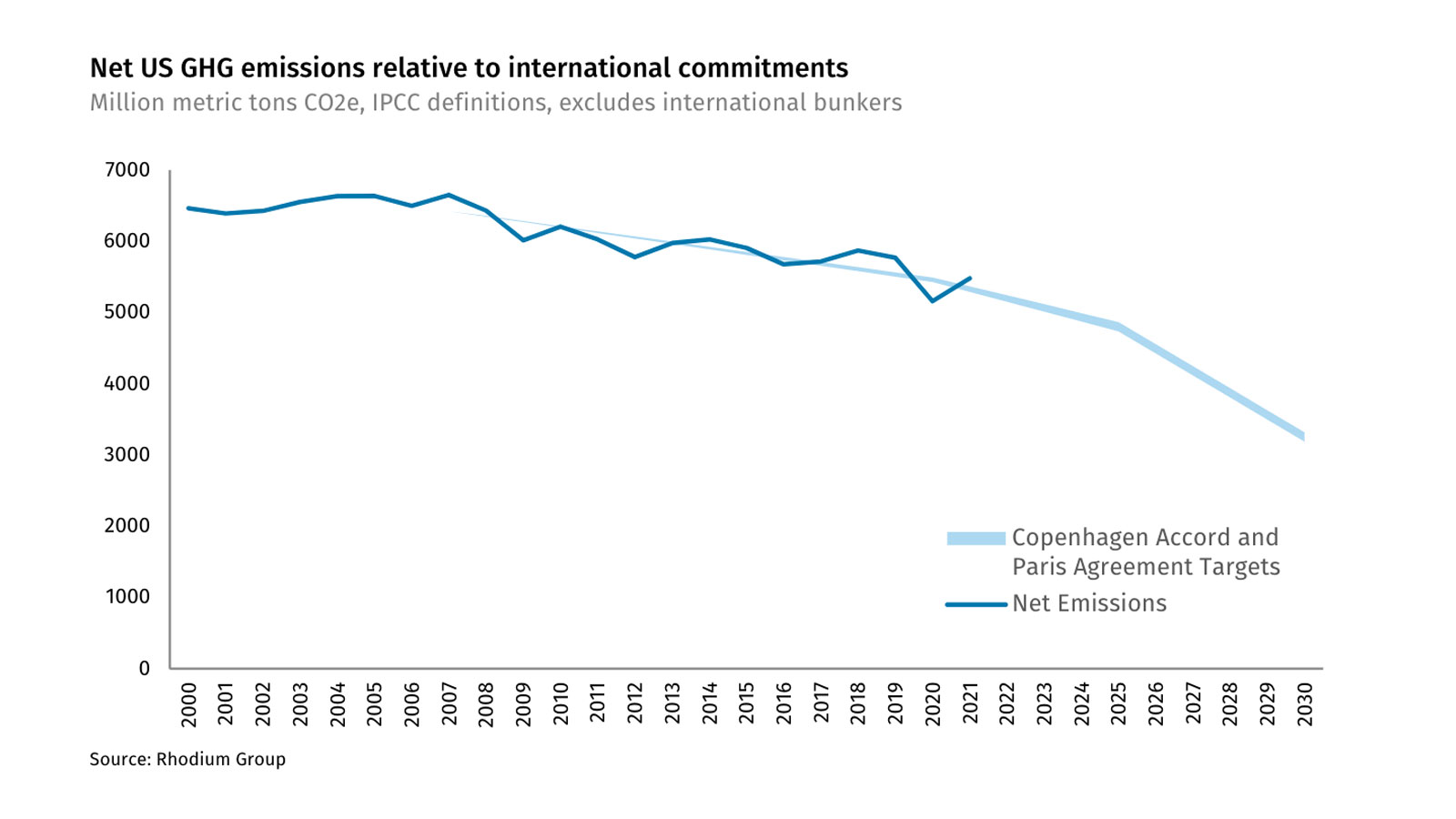Coal was supposed to be on its deathbed. For the past seven years, coal use in America has been trending down. Faced with falling natural gas prices and the growth in wind and solar energy, coal plants from Illinois to New Mexico closed their doors. In 2005, coal plants generated 2 trillion kilowatt-hours of American power; by 2020, that number had been cut by more than half. And as coal vanished, replaced by less carbon-intensive natural gas, U.S. greenhouse gas emissions edged down. In 2020, as the COVID-19 pandemic cratered carbon dioxide emissions overall, coal use fell by a whopping 19 percent.
Then 2021 happened.
According to a report released Monday by the energy research firm Rhodium Group, coal use rebounded for the first time since 2014, growing 17 percent in 2021. That coincided with a rebound in overall greenhouse gas emissions as the economy slowly recovered from the COVID-19 pandemic. In 2020, U.S. emissions fell by 10.3 percent, the largest drop since World War II; in 2021, they climbed 6.2 percent — not returning to 2019 emission levels, but perilously close.
That’s bad news for the climate. Over the past decade, most of the United States’ emissions cuts have come from cheap natural gas replacing coal. But last year, rising natural gas prices helped resuscitate the dirtiest fossil fuel. A cold winter and declining supply sent natural gas prices skyrocketing to more than double their 2020 average. In response, utilities leaned more on coal to generate electricity across the country — and emissions climbed.
The same story played out elsewhere. In China and India, coal production surged in 2021, sending global emissions nearly all the way back to pre-2020 highs.
The return of coal shows that “the progress we’ve made over the past couple of decades is at the whims of energy markets,” said Kate Larsen, a partner at Rhodium Group and one of the authors of the report. Without strong federal policy, she added, “We don’t have a backstop to prevent this from happening.”

It’s a grim lesson as countries struggle to cut CO2 quickly and permanently. President Joe Biden has vowed to slash emissions in half by 2030, compared with their peak in 2005. If natural gas prices go down as expected in 2022, coal use will probably recede once more. Last year, however, U.S. emissions were only down by 17 percent, and with Congress’s planned climate bill on hold, the future doesn’t look particularly bright.
There were other factors contributing to the emissions rise. As lockdowns receded, Americans returned to driving and flying — not as much as in 2019, but substantially more than in 2020. Demand for diesel fuel — a good proxy for shipping and trucking — also increased beyond 2019 levels, as Americans began buying more TVs, household appliances, books, and all sorts of stuff.

And Biden’s climate promises? If natural gas prices drop as expected in 2022, coal use will probably recede once more, taking emissions down with them. To meet the 2030 goal, the U.S. will have to cut CO2 emissions by approximately five percent every year for the next nine years. That’s about equivalent to the emissions of the entire state of Florida — repeated nine times. In the past decade, the country hasn’t come even close to that pace. According to Larsen, the average emissions reductions per year has been around one percent.
In the next nine years, the U.S. could commit to sharp, decisive change that would boost renewables, cut coal use, and clean up the country’s electricity, transportation, and industry. Or the country’s emissions could continue to wobble somewhere between 17 to 25 percent of their peak levels for another decade as the world continues to heat up. Which will it be?




